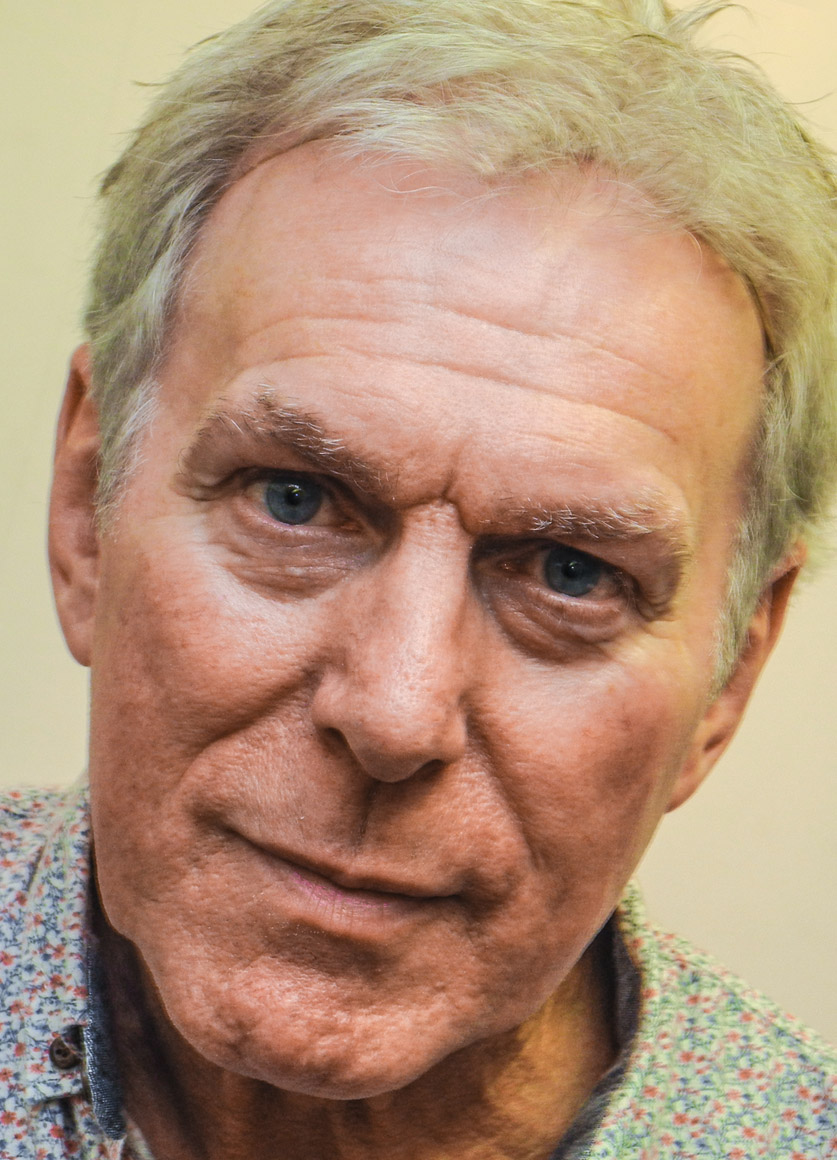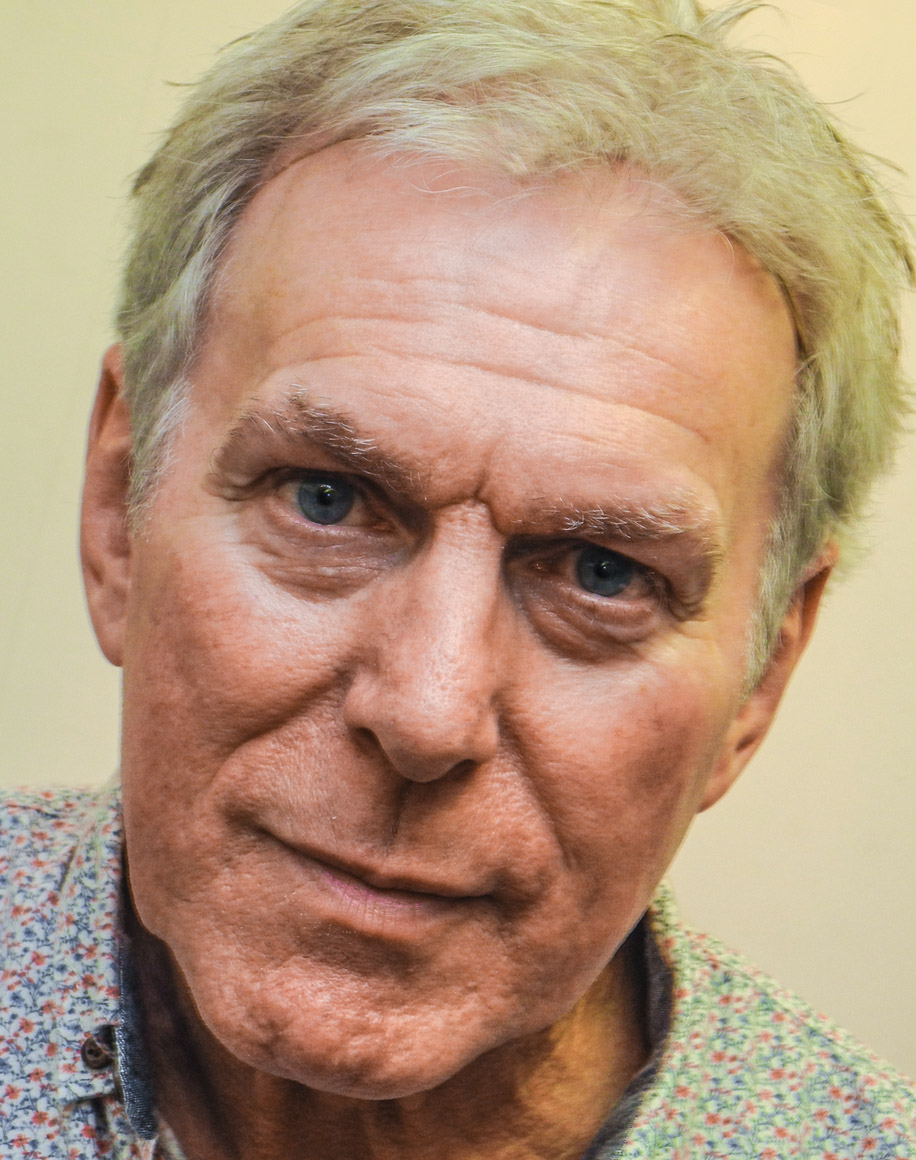THE MAN INSIDE is such a big, impressive show one could almost get the feeling you’d set up at the wrong theatre. This is the sort of show you expect to see in Her Majesty’s, not a small studio space. ‘Funnily enough, this show has gone in an odd direction, from big to small. About fifteen years ago this was a show with twenty-five in the cast and fifteen in the orchestra. It was a big, big version of the show which in those days was called Jekyll. It ran its course but I always felt there was something more to it if we could hone in a little bit on the character. But it’s so difficult to get shows on nowadays, it costs millions and there are no guarantees. And I thought the way to do the Jekyll show was to show people the potential of the piece, so I went to see Robert McWhir at the Landor Theatre in London.’
So this new version of the show, The Man Inside, is very much your project?
‘I’ve been involved with it for a long, long time. It’s written by Tony Rees and Gary Young but I get a credit for “additional material”. Whenever I started thinking about new projects, I always pushed this one. But, for whatever reason, it never happened because there was so much money involved. So, as I said, I thought it best to demonstrate the potential of what we’ve got. So the four of us, me, Tony and Gary and Robert had a meeting. We showed him the book, played him some songs and said this is what we’ve got. And Robert said, yes, let’s do it. And he explained that the Landor had just started this co-operation with the Everyman in Cheltenham who would be thrilled to be involved, so it was decided that The Man Inside would be the first collaboration.’
As you know, I was very impressed with the show, my only reservation was that it seemed very cramped in a studio space.
‘You’re right. In a funny sort of way, even the show as it is now, which we have re-written as a three-hander, is in danger of getting bigger that the space we have got. But there’s not a lot you can do about that.’
I think the idea of condensing a large musical down to its essence is brilliant. You really concentrate on the story and the characters rather than being overwhelmed by the production. However, it felt a bit like sitting in the front row of a cinema.
‘It’s really in your face. You’re absolutely right. But this is really a sort of very glorified and elaborate workshop and the object of the exercise is to take it further. I personally think that if we did it in some lovely little 300/400-seater theatres around the country it would work well just as a three-hander. It would be better because we’d actually be on a stage and not knocking knees with people in the front row of a studio space. If we did that we might put a little more flesh on the bone in the areas where we need it, but basically it would stay the same. However, if someone came to us and said here’s ten million pounds, we need a two act show, ten more characters and a full orchestra we’d do it, we’re not precious about it. But yes, as I said ebfore, it is possible to small-scale big shows.
‘I did Sunset Boulevard in the West End, at the Comedy, directed by Craig Revel Horwood with actor-musicians and it was stripped right down and was fantastic. Now, we couldn’t have done it at the Palladium, but that’s not the point. We could take The Man Inside, as it is now, around smaller theatre venues and do a season and it would work.’
You don’t need all the big production numbers and flashy sets and effects to make a great show.
‘After the big productions of Ragtime we did it at the Piccadilly with three chairs and six doors and it worked. Everybody said wow, I didn’t realise that was the story, because we honed right in on the characters and we really made it work.’
That’s the wonderful thing about The Man Inside, there are no distractions, it’s just the story.
‘You can do it several ways. We kept it simple. When he changes from Dr. Jekyll to Mr. Hyde there are no green-lit faces or smoke coming out of his ears. Hopefully, the effect is achieved with the music and body language and that sort of thing.’
So, how do you think it will go from here?
‘We will be on at the Landor for a couple of weeks and there is always the chance that some producer will see it and want to take it on and develop it. But like I said, I would be very happy to tour it for a few months around smaller theatres and then maybe do a season in the West End at the Comedy, or the Pinter as it is now. That would be my ideal.’
Dave Willetts was talking exclusively to Michael Hasted on 6th March 2014
Click here to read our review of The Man Inside
Dave Willetts may not be a household name but he is a West End musical star with a CV and reputation to match any name you would care to mention. He took over from Michael Crawford in Phantom of the Opera and is the only artist to have played the lead in both Phantom and Les Miserables in the West End. If you name any big show in the past twenty-odd years the chances are the Dave Willetts has appeared in it, either in London or on Broadway.
Photo and text © Michael Hasted 2014 All rights reserved. No reproduction in part or in whole without express prior agreement.



